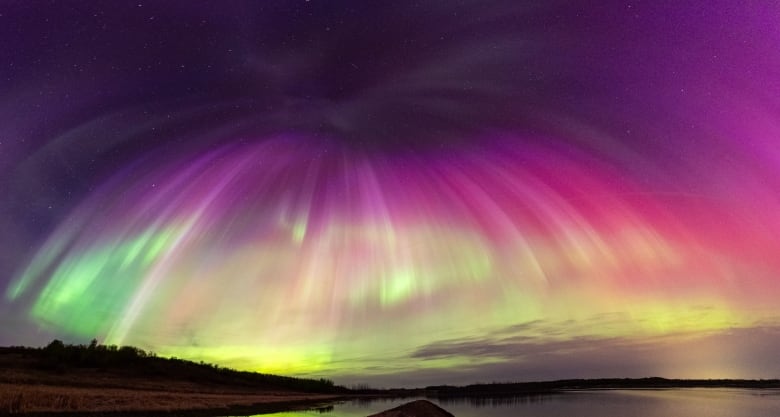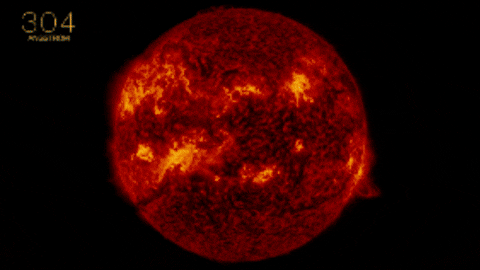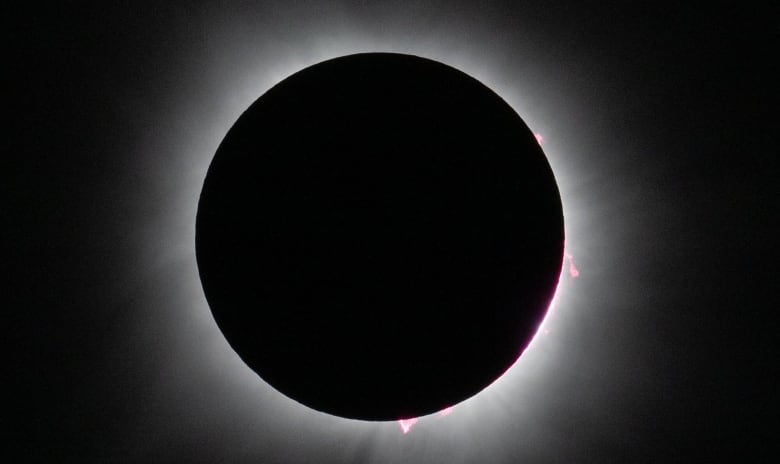
The colourful auroras that treated skywatchers across the country last weekend and the total solar eclipse last month are reminders that the Earth is in direct line of fire from activities on the surface of the sun.
The Space Weather division of the U.S. National Oceanic and Atmospheric Administration (NOAA) has been issuing warnings for the past week that massive solar flares on the surface of the sun have produced that largest geomagnetic storms in decades here on Earth.
The sun is entering a period of heightened activity known as solar maximum which happens every 11 years where extra sunspots appear on its surface — and along with them, enormous solar eruptions.
These solar flares blow gigantic blobs of electrified subatomic particles off the star’s surface. Known as coronal mass ejections, these space blobs are are many times the size of the Earth — and occasionally aimed directly at us.
When these huge clouds of plasma strike our planet, the Earth’s magnetic field guides them toward the planet’s North and South Poles, where they strike the atmosphere causing it to glow in the spectacular display of northern lights. The effect is similar to neon lights, where gasses inside glass tubes glow red when electricity is run through it.

But at the same time, the electrified space cloud can cause the Earth’s magnetic field of the to tremble like a giant soap bubble. As it moves, it acts like a gigantic generator, inducing electric currents in the ground, in power lines, the electronics of satellites as well as interfering with radio communication. These unwanted electric currents have been responsible for power blackouts and satellite breakdowns in the past.
This week’s storm was so powerful that it was even detected deep underwater by arrays of scientific instruments on the sea floor operated by Ocean Networks Canada.
LISTEN: Ocean Networks Canada’s Kate Moran talking about the solar storm that scrambled undersea sensors
Quirks and Quarks6:44The recent solar storm scrambled undersea sensors
In 1989, Quebec Hydro suffered a major blackout when the long power lines running south along the James Bay power network from the southern end of Hudson Bay were overloaded, casting a large section of the province into darkness for nine hours. Since then, power utilities have put safeguards in place to prevent such events, and satellite electronics are shielded for protection.
Today, thankfully, a network of observatories such as the European Space Agency’s and NASA’s Solar and Heliospheric Observatory (SOHO), are positioned in space to constantly monitor conditions on the sun’s surface. That way, flares can be detected and warnings issued for impending geomagnetic storms.

Space weather forecasts are now as regular as storm forecasts on Earth.
You can check space weather conditions and forecasts provided by many international agencies, including here in Canada at Space Weather Canada and elsewhere in places like the U.K., Europe, Australia, India and Japan, to name a few.
We depend on the sun for our very existence. It provides our planet with heat and light that keeps the temperature just right for life. It allows photosynthesis to take place in plants at the bottom of the food chain. Wind and weather are driven by the sun.
But eruptions on the sun and their associated ejections are another invisible influence that reaches across space to touch our planet.

During last month’s total solar eclipse, people saw the beautiful silvery corona that surrounds the sun. But that glowing ring is only the visible part.
It’s within that corona that these storms happen, turning what looks like empty space into a turmoil of charged particles and radiation that blows across the entire solar system and beyond.
The sun does much more than shine down from above. We live within it.